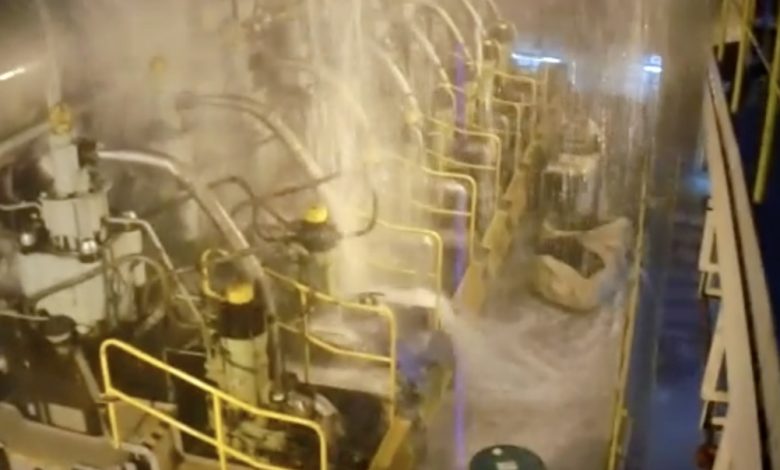Fixing corroded scrubber pipes becomes hot new business in shipping

Ship equipment manufacturers have a new lucrative sulphur cap side business – repairing corroded scrubber apparatus.
Hydrex, the Belgian underwater repair specialists, has detailed how it is handling a growing number of scrubber pipe repair cases with plenty of reports of corrosion leading to water ingress on ships in as little as six months of installation.
Hydrex gave details of two shuttle tankers that were berthed in Rotterdam and Skagen respectively last December and experienced water ingress as a result of corroded scrubber cooling pipes.
“This is an issue that we at Hydrex encounter regularly with our customers,” a spokesperson for the company told Splash.
Cases of corrosion linked to scrubbers are growing, prompting insurers and authorities to issue recent advisories and featured in discussions at yesterday’s Maritime CEO Forum in Monaco.
Norwegian P&I club Gard stated in a note to clients that it has seen a few incidents where within 10-15 months of an open-loop scrubber being installed, corrosion of overboard distance piece or in its immediate vicinity has resulted in water ingress into areas such as the engine room, ballast tanks and cargo holds.
Singapore’s Maritime and Port Authority (MPA) has also recently issued extensive advice on scrubber maintenance, citing a video carried by Splash of a severe scrubber malfunction that saw thousands of gallons of sea water gush into the engine room of a large bulk carrier (see video below).
“It is imperative that the structural integrity of the scrubber and associated pipework is constantly checked for signs of leakage or corrosion,” MPA stated, adding: “Aside from the video, there are also reports of scrubber corrosion repairs being required less than six months after installation. In view of the acidic nature of the scrubber washwater, correct material selection for the scrubber body, pipework, components and accessories, together with good installation workmanship are critical to avoid subsequent safety issues.”

If pipes are corroding between 6 and 15 months from installation then either the materials being used are sub-standard or the basic concept of scrubbers is poorly based.
If the former, then who is doing quality checks upon installation? What material is being used? Is it just a question of grade/ thickness or is the (stainless?) steel not up to the required specified standard? Are the sub-standard systems all linked to one or a few installers or manufacturers?
If the design or concept of scrubbers is in question, who has road-tested the scrubber concept and design? Scrubbers have been installed on many vessels for years long before IMO2020 so why is this problem only now being reported?
There are many questions to be answered and more information needs to be provided to evaluate the reported problems but, if these problems persist and insurers become averse then continued use of scrubbers could encounter more restrictions.
A likely cause would be fatigue-induced corrosion.
A number of stainless steel grades suffer from this. It would be interesting to understand the material grade in question, the loads applied to the the pipes and what cyclical load variation under different conditions they may be subject to.
Is it really the problem of the pipe or it’s Substandard materials being used, Quality Check was just on paper, Which Yard, should be black listed, In these days double layer pipe is used in Japan (PVC inserted into SS pipe) , Yard , owners should see quality of materials, workmanship, there should not be any compromise on it.